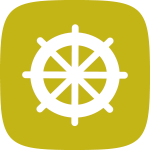INTRODUCTION
It is good to keep the big picture in sight. It is even better if you and your partners can quickly agree on concrete projects and strategies. What can we do how and when to make a good life more easily attainable?
»Political Strategies« offers a digital manual which helps you to elaborate your own strategy step by step. Next to the manual and tips, there are some tried and tested management tools tailored to the specific challenges of sufficiency politics and the demands of civil society and the political sector.

FOCUS
Topic
In which Policy area do you want to develop a strategy?
Which political level do you want to address?
Which approach do you want to choose?
Which line of orientation fits your strategy?
Are there existing strategies, projects or initiatives which could serve as an example?
Actors
Which actors are relevant to your strategy?
How influential are these actors and what is their stance (power analysis)?
Do you share topics with other actors and could you take advantage of synergies? With whom could you cooperate?
Where do you expect conflicts? How can you avoid them? How can you turn opponents by changing their perspectives?
Challenges & Success Factors
What challenges do you have to face when developing your strategy? What do you need to do to be successful?
What challenges do you face during implementation? How can you implement your strategy successfully?
Evaluate in your thoughts: Can you overcome the collected challenges with your success factors?

Course of Action
Development & Governance
Who is responsible for developing the strategy?
What financial and time resources can you invest in development and implementation?
What are fields of action that help to structure your strategy? (e.g. development, events, PR)
What are the most important steps for developping the strategy?
Which internal and external actors should already be involved in the development phase? Who are your potential partners in implementation?
What is the time-frame of development (e.g., 3 months)? How long will it take to implement?
Content & Communications
How do you want to present the contents of you strategy (background, facts, stipulations)?
Which partners may be of help (universities, associations etc.)?
Can you define 2-3 target groups covering the most important actors from your mapping? What kind of language do you need to use to reach these groups?
What are the 5 most important questions and messages regarding your strategy (“elevator pitch”)?
Which critical questions do you anticipate? Can you answer them intelligently?
Implementation
How will you implement your strategy? What are the crucial steps along the way?
How should your communication look like: publications, panel discussions, billboards, talks?
How do you evaluate the impact of your strategy (SMART goals)? Which aspects are quantifiable, which require a qualitative assessment?
What would make you say that the strategy was worth the while?

Goals
Vision
Which sufficient lifestyles do you want to make more attainable? What about them fascinates you most?
Which political framework conditions are required to reach this vision? What is the status quo?
What motivates you to start working towards achieving your vision now? Is there a links to current topics and processes?
What are the stories and images that you can use to convey your vision emotionally?
Goals
Which concrete goals do wou want to reach?
Are your goals aimed at evoking sufficient behaviour (e.g. more bicycles in current conditions) and/or at changing conditions (e.g. more bike lanes)?
Are your goals SMART? Take the test: are your goals
- Specific
- Measurable
- Ambitious
- Realistic
- Timel-related

